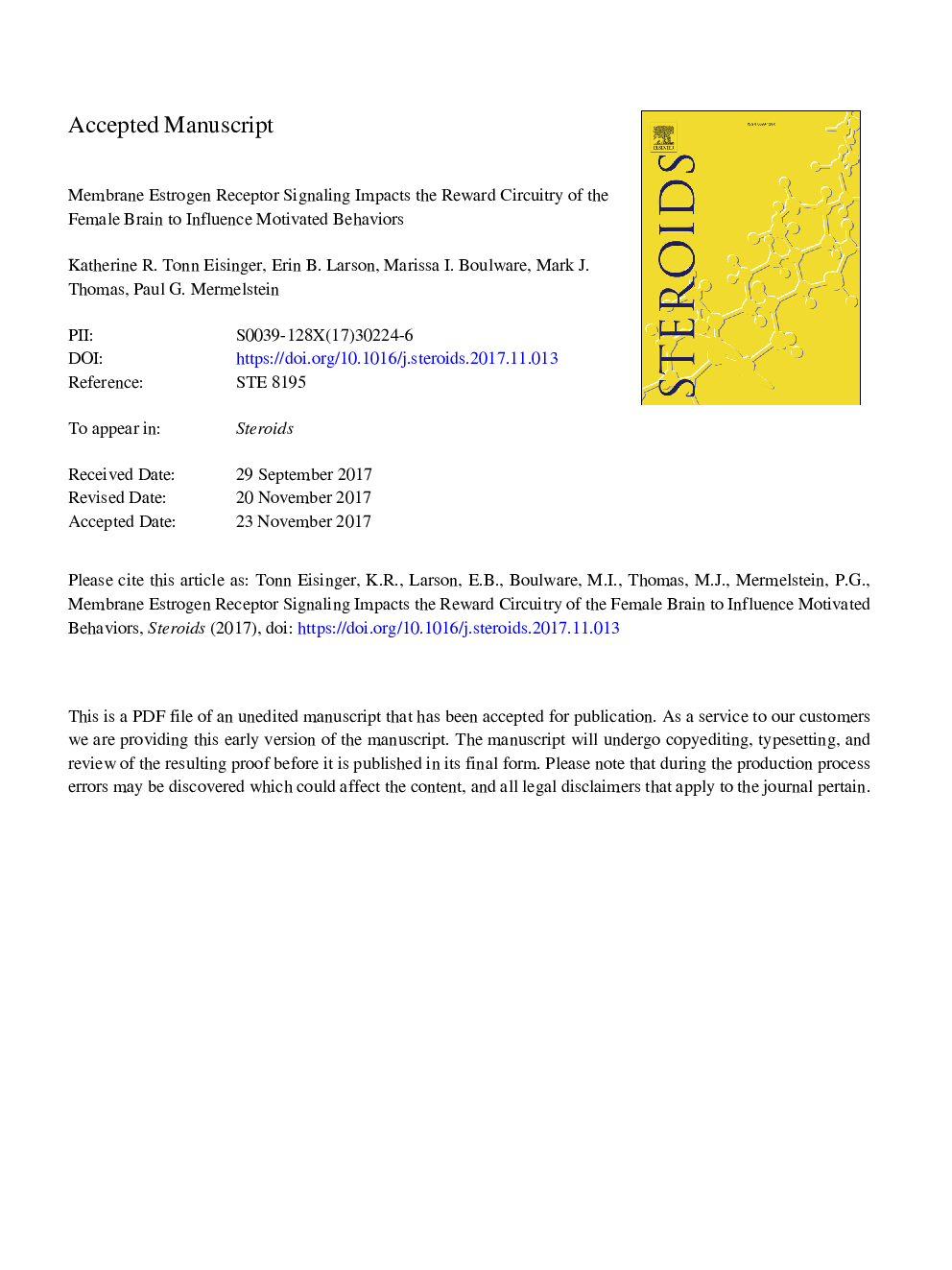| Article ID | Journal | Published Year | Pages | File Type |
|---|---|---|---|---|
| 8366335 | Steroids | 2018 | 24 Pages |
Abstract
Within the adult female, estrogen signaling is well-described as an integral component of the physiologically significant hypothalamic-pituitary-gonadal axis. In rodents, the timing of ovulation is intrinsically entwined with the display of sexual receptivity. For decades, the importance of estradiol activating intracellular estrogen receptors within the hypothalamus and midbrain/spinal cord lordosis circuits has been appreciated. These signaling pathways primarily account for the ability of the female to reproduce. Yet, often overlooked is that the desire to reproduce is also tightly regulated by estrogen receptor signaling. This lack of emphasis can be attributed to an absence of nuclear estrogen receptors in brain regions associated with reward, such as the nucleus accumbens, which are associated with motivated behaviors. This review outlines how membrane-localized estrogen receptors affect metabotropic glutamate receptor signaling within the rodent nucleus accumbens. In addition, we discuss how, as estrogens drive increased motivation for reproduction, they also produce the untoward side effect of heightening female vulnerability to drug addiction.
Related Topics
Life Sciences
Biochemistry, Genetics and Molecular Biology
Biochemistry
Authors
Katherine R. Tonn Eisinger, Erin B. Larson, Marissa I. Boulware, Mark J. Thomas, Paul G. Mermelstein,
